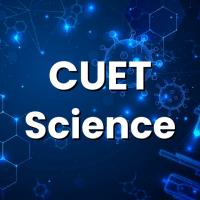Class 11 Exam > Class 11 Questions > What are the components of the transport syst...
Start Learning for Free
What are the components of the transport system in human beings? What are the functions of these vomponents?
Most Upvoted Answer
What are the components of the transport system in human beings? What ...
The transport system in human beings consists of various components that work together to ensure the efficient circulation of essential substances throughout the body. These components include the heart, blood vessels, and blood. Each component plays a crucial role in maintaining homeostasis and providing the necessary nutrients and oxygen to all the cells in the body while removing waste products.
b The Heart:
The heart is a muscular organ located in the chest cavity. It acts as a pump that continuously circulates blood throughout the body. Its main functions include:
1. Pumping Blood: The heart contracts and relaxes rhythmically to pump oxygenated blood to all the body tissues and organs.
2. Maintaining Blood Pressure: The heart helps to regulate blood pressure by adjusting the force with which it pumps blood.
3. Separating Oxygenated and Deoxygenated Blood: The heart has four chambers - two atria and two ventricles. It ensures that oxygenated and deoxygenated blood does not mix by separating them into different chambers.
b Blood Vessels:
Blood vessels are a network of tubes that transport blood to and from different parts of the body. There are three types of blood vessels:
1. Arteries: Arteries carry oxygenated blood away from the heart to various organs and tissues. They have thick, elastic walls to withstand the high pressure generated by the pumping action of the heart.
2. Veins: Veins carry deoxygenated blood from the body tissues back to the heart. They have valves that prevent the backflow of blood and rely on skeletal muscle contractions to assist in blood flow.
3. Capillaries: Capillaries are tiny, thin-walled blood vessels that connect arteries and veins. They facilitate the exchange of nutrients, gases, and waste products between the blood and surrounding tissues.
b Blood:
Blood is a connective tissue that transports substances throughout the body. It is composed of plasma, red blood cells, white blood cells, and platelets. The functions of blood include:
1. Transporting Oxygen and Nutrients: Red blood cells contain hemoglobin, which binds to oxygen and transports it to body cells. Blood also carries nutrients, hormones, and other vital substances to various tissues.
2. Removing Waste Products: Blood collects waste products such as carbon dioxide and metabolic byproducts from cells and transports them to organs like the lungs and kidneys for elimination.
3. Fighting Infections: White blood cells in the blood help defend the body against foreign invaders such as bacteria and viruses, playing a crucial role in the immune system.
In summary, the transport system in human beings comprises the heart, blood vessels, and blood. The heart pumps blood, maintaining blood pressure and separating oxygenated and deoxygenated blood. Blood vessels, including arteries, veins, and capillaries, transport blood to and from different parts of the body. Blood carries oxygen, nutrients, and waste products, while also helping fight infections. Together, these components ensure the proper functioning and well-being of the body.
b The Heart:
The heart is a muscular organ located in the chest cavity. It acts as a pump that continuously circulates blood throughout the body. Its main functions include:
1. Pumping Blood: The heart contracts and relaxes rhythmically to pump oxygenated blood to all the body tissues and organs.
2. Maintaining Blood Pressure: The heart helps to regulate blood pressure by adjusting the force with which it pumps blood.
3. Separating Oxygenated and Deoxygenated Blood: The heart has four chambers - two atria and two ventricles. It ensures that oxygenated and deoxygenated blood does not mix by separating them into different chambers.
b Blood Vessels:
Blood vessels are a network of tubes that transport blood to and from different parts of the body. There are three types of blood vessels:
1. Arteries: Arteries carry oxygenated blood away from the heart to various organs and tissues. They have thick, elastic walls to withstand the high pressure generated by the pumping action of the heart.
2. Veins: Veins carry deoxygenated blood from the body tissues back to the heart. They have valves that prevent the backflow of blood and rely on skeletal muscle contractions to assist in blood flow.
3. Capillaries: Capillaries are tiny, thin-walled blood vessels that connect arteries and veins. They facilitate the exchange of nutrients, gases, and waste products between the blood and surrounding tissues.
b Blood:
Blood is a connective tissue that transports substances throughout the body. It is composed of plasma, red blood cells, white blood cells, and platelets. The functions of blood include:
1. Transporting Oxygen and Nutrients: Red blood cells contain hemoglobin, which binds to oxygen and transports it to body cells. Blood also carries nutrients, hormones, and other vital substances to various tissues.
2. Removing Waste Products: Blood collects waste products such as carbon dioxide and metabolic byproducts from cells and transports them to organs like the lungs and kidneys for elimination.
3. Fighting Infections: White blood cells in the blood help defend the body against foreign invaders such as bacteria and viruses, playing a crucial role in the immune system.
In summary, the transport system in human beings comprises the heart, blood vessels, and blood. The heart pumps blood, maintaining blood pressure and separating oxygenated and deoxygenated blood. Blood vessels, including arteries, veins, and capillaries, transport blood to and from different parts of the body. Blood carries oxygen, nutrients, and waste products, while also helping fight infections. Together, these components ensure the proper functioning and well-being of the body.

|
Explore Courses for Class 11 exam
|

|
Question Description
What are the components of the transport system in human beings? What are the functions of these vomponents? for Class 11 2025 is part of Class 11 preparation. The Question and answers have been prepared according to the Class 11 exam syllabus. Information about What are the components of the transport system in human beings? What are the functions of these vomponents? covers all topics & solutions for Class 11 2025 Exam. Find important definitions, questions, meanings, examples, exercises and tests below for What are the components of the transport system in human beings? What are the functions of these vomponents?.
What are the components of the transport system in human beings? What are the functions of these vomponents? for Class 11 2025 is part of Class 11 preparation. The Question and answers have been prepared according to the Class 11 exam syllabus. Information about What are the components of the transport system in human beings? What are the functions of these vomponents? covers all topics & solutions for Class 11 2025 Exam. Find important definitions, questions, meanings, examples, exercises and tests below for What are the components of the transport system in human beings? What are the functions of these vomponents?.
Solutions for What are the components of the transport system in human beings? What are the functions of these vomponents? in English & in Hindi are available as part of our courses for Class 11.
Download more important topics, notes, lectures and mock test series for Class 11 Exam by signing up for free.
Here you can find the meaning of What are the components of the transport system in human beings? What are the functions of these vomponents? defined & explained in the simplest way possible. Besides giving the explanation of
What are the components of the transport system in human beings? What are the functions of these vomponents?, a detailed solution for What are the components of the transport system in human beings? What are the functions of these vomponents? has been provided alongside types of What are the components of the transport system in human beings? What are the functions of these vomponents? theory, EduRev gives you an
ample number of questions to practice What are the components of the transport system in human beings? What are the functions of these vomponents? tests, examples and also practice Class 11 tests.

|
Explore Courses for Class 11 exam
|

|
Signup for Free!
Signup to see your scores go up within 7 days! Learn & Practice with 1000+ FREE Notes, Videos & Tests.


















